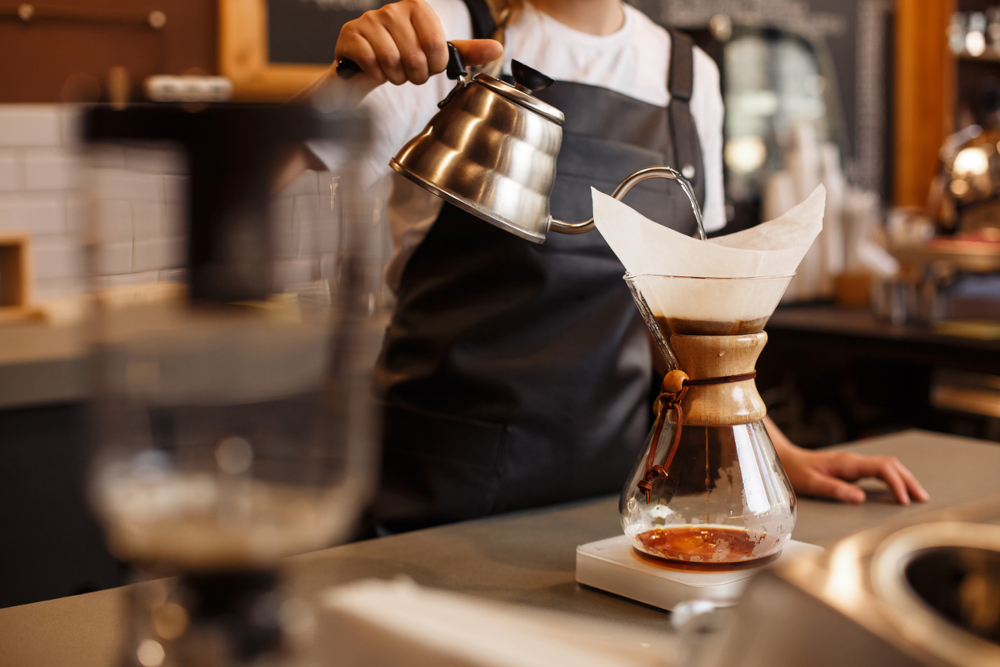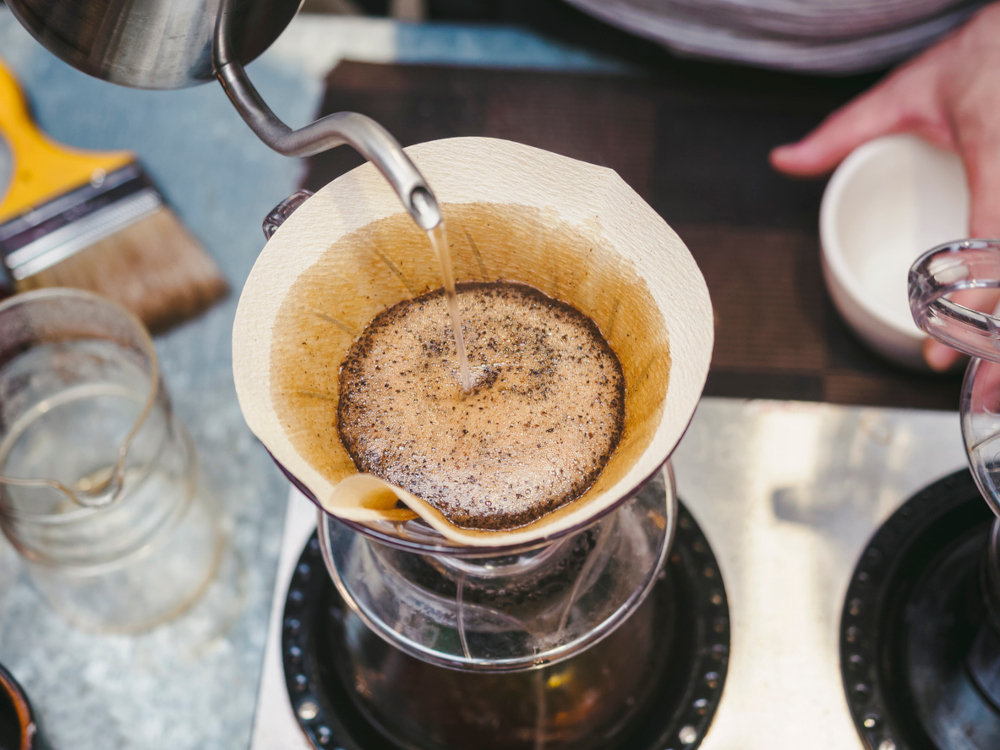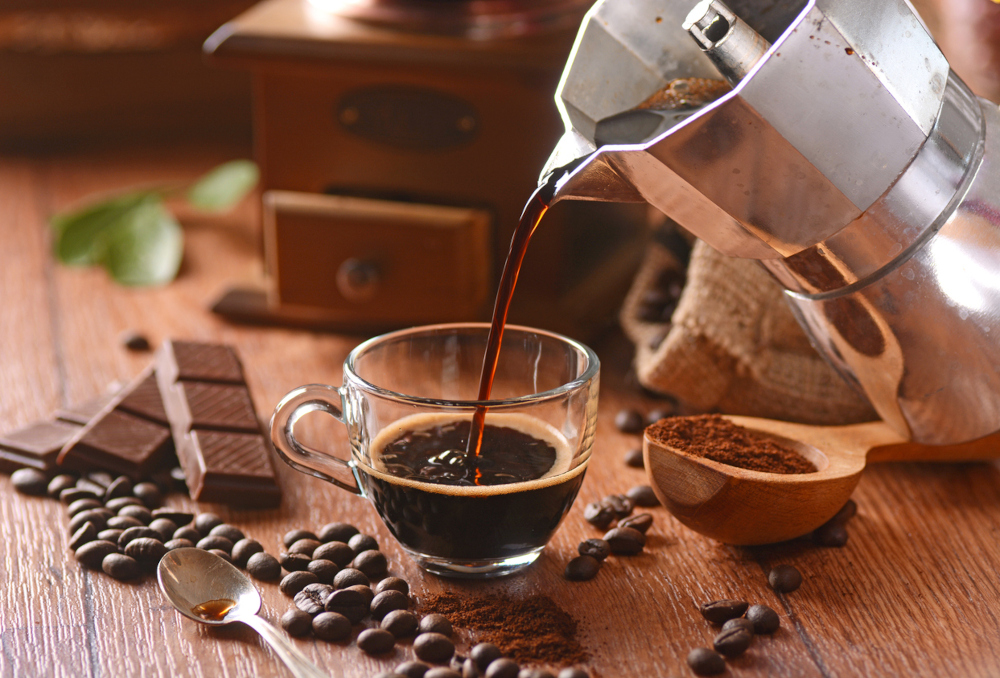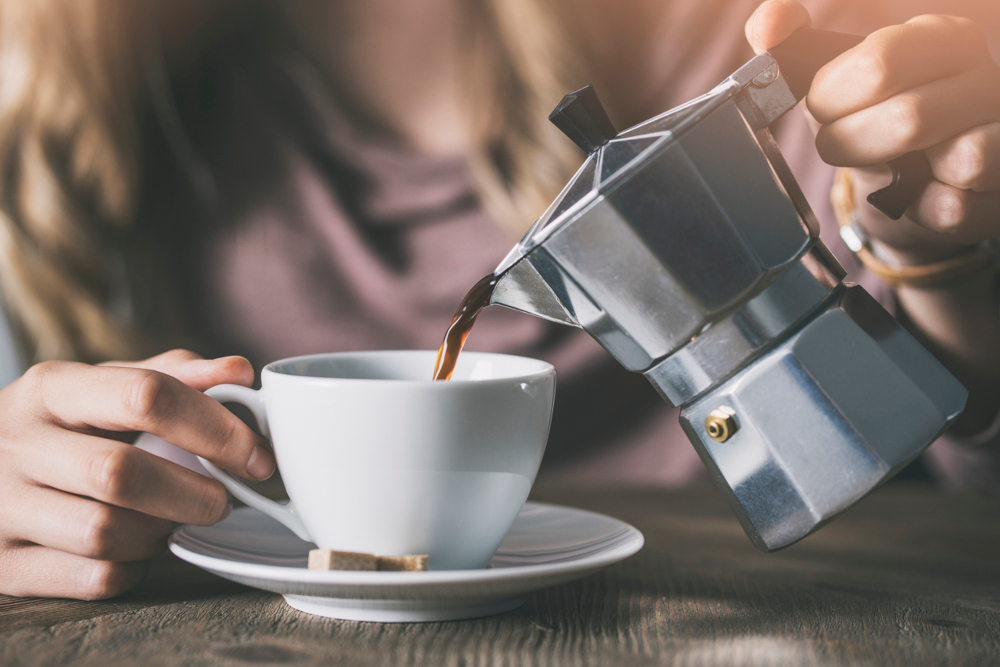Brewing the perfect pot of coffee is easier than ever with a percolator or drip coffee maker, whether you’re looking for something simple and basic or want all the bells and whistles. But, what’s the difference between percolator coffee vs drip coffee anyway?

Table of Contents
- Percolator Coffee vs Drip Coffee – Know Your Brew
- How to Make Coffee in a Percolator in 9 Easy Steps
- FAQ
- Conclusion
These convenient machines make brewing your morning cup of joe a breeze. And with so many different options to choose from, there’s sure to be the perfect machine for you.
So go ahead and stock up on filters, coffee grounds, and start enjoying that delicious caffeine goodness.
But first, find out what sets apart percolator coffee vs drip. They both seem to produce caffeinated beverages, so what’s the big deal with these two?
| Drip Brew Coffee | Percolator Coffee | |
|---|---|---|
| Flavor | Mostly depends on the brewing machine | More intense, depending on how many boiling cycles you've put it through |
| Caffeine | 60-100 mg per cup | 200 mg per cup |
| Brewing time | 5-10 minutes | 8-15 minutes |
| Brewing control | You rely solely on the coffee maker's presets | You have to manually control the entire brewing process |
| Ease of use | Easy to use since the entire process is automated | You'll need to experiment with different grinds, water quantities, and number of boiling cycles |
| Required supplies | Coffee machine, paper filter, ground coffee, and water | Stove percolator, ground coffee, water |
| Cleanup | You have to disassemble and clean the removable parts | Debris tends to accumulate over time in hard-to-reach places |
| Price | A machine can cost as low as $20 | A machine can cost as low as $25-$30 |
Percolator Coffee vs Drip Coffee – Know Your Brew
Talking about two different brewing methods without even knowing what they are would be a little silly, wouldn’t it? Let’s start by defining drip coffee and percolator coffee.

What Is a Coffee Percolator?
A coffee percolator brews coffee by cycling boiling water through finely-ground coffee beans. It does so by using a stem that passes through the water repeatedly.
This method extracts more oils and soluble elements from the grounds to produce a richer cup of joe, resulting in more flavor and an intense taste.
What Is Drip Coffee?
This brewing method is probably the most widely spread type of coffee. Hot water is poured over ground coffee beans placed in a paper or metal filter, separating the grounds from the brewed coffee.
The drip method produces a clean cup of coffee with a more subtle flavor than percolator coffee.
Comparing Percolator Coffee vs Drip
Now that you know the basics of percolator coffee vs drip coffee, let’s dive into the differences:

Flavor
The drip coffee method produces a cup of coffee with a more subtle flavor than percolator coffee.
Pouring hot water over the ground coffee beans and waiting for the liquid to drip through a paper or metal filter allows more of the bean’s flavor to be retained, giving you a smooth cup of coffee.
In contrast, percolator coffee is known for its bolder flavor profile.
The water that cycles through the grounds extracts more oils and soluble elements, giving the coffee a richer flavor. This can be great if you’re looking for something with a bit more kick, but some people find it too overpowering.
Caffeine
If caffeine is your main concern, then percolator coffee will win in this category.
A drip coffee typically contains less caffeine than a percolator coffee because the brewing process is shorter. More time means more caffeine extracted from the grounds, which is why percolator coffee often has higher caffeine content.
Brew Time
Another big difference between percolator coffee vs drip is the brew time.
Since drip coffee relies on gravity to drip through the grounds and filter, it takes a bit longer for all the water to make its way through – about 5-10 minutes (depending on how much you’re making).
In contrast, percolator coffee requires you to cycle boiling water through finely-ground coffee beans with a stem that passes through the water repeatedly.
This method can take anywhere between 8 to 15 minutes, depending on how many times you cycle the coffee through the grounds and how strong you want your coffee.
If you’re looking for a fast way to prepare coffee, try Americano. In fact, we suggest checking out the differences between Americano and drip coffee.
Quantity
Depending on how much coffee you can brew in a single sitting, both drip coffee makers and coffee percolators are designed with similar brewing capacities.
Thus, both brewing methods are equally reliable, whether you just want to make one cup of coffee in the morning or if you need to make enough for an entire social event.
Brew Control
One of the reasons drip coffee is so popular is because the drip coffee makers are automated, and they handle the entire brewing process with the push of a button.
Sure enough, you can adjust certain aspects of the brewing process by either adding more or less water to the reservoir or adding more or fewer coffee grounds into the filter, but that’s pretty much it.

On the other hand, using a percolator gives you more freedom and versatility as to how the coffee will turn out. You see, besides having to adjust the amount of water and the coffee grounds, you’ll also need to pay attention to the cycling process.
However, with a little bit of experience via trial and error, you will eventually learn to use a percolator and create a coffee that tastes exactly the way you want.
If you prefer a portable machine for preparing your coffee, consider using a French press. Before doing so, you should check out the differences between French press and drip coffee.
Ease of Use
Drip coffee is easier to use than a percolator. All you need is a drip coffee maker with a drip cone and some filters, and you’re good to go. You can also use auto drip coffee makers.
Percolators require more attention and care since you have to constantly be cycling water through the grounds.
So, unlike the drip coffee maker that you can program and then return to 10 minutes later, you’ll have to watch over the percolator to ensure that everything is going ok.
Pour-over coffee also requires more coffee-making experience, but it yields rich and flavorful coffee. Learn more about the differences between pour-over and drip coffee.
Cleanup
Cleaning a drip coffee maker is a breeze – all you need is some warm water, dish soap, and a sponge for the removable parts (these are the only ones that get dirty), and a lot of these removable parts are also dishwasher-friendly.
Unfortunately, they need frequent cleaning, so if you’re not the type of person who enjoys doing dishes, then drip coffee might not be for you.
Coffee percolators are not easy to clean because of the many nooks and crannies where the coffee grounds accumulate over time.
Price
Both coffee percolators and drip coffee makers come in various price ranges, so you can find one that’s affordable for your budget.
However, both cost the same, with prices starting at about $20, and rarely do they ever exceed $50.
Here are some examples of popular drip coffee makers:
- Mr. Coffee 12-Cup Coffee Maker – The best budget-friendly choice
- Hamilton Beach 49980A Coffee Maker – The best mid-range choice
- Cuisinart DCC-3200BKSP1 Coffee Maker – The best premium choice
On the other hand, if you’re more partial to getting a stovetop espresso maker, here are some popular choices:
- Primula Stovetop Coffee Maker – The best budget-friendly choice
- GROSCHE Milano Stovetop Espresso Maker – The best mid-range choice
- Farberware Percolator, Stainless Steel – The best premium choice
How to Make Coffee in a Percolator in 9 Easy Steps
Earlier in the article, we talked about how you need to pay more attention when using a percolator, so we decided that it might be helpful to guide how to make coffee in a percolator.

- Make sure you have the following supplies:
- A stovetop percolator
- Measuring spoon
- Coffee grinder
- A heat source
- Coffee beans
- A kettle
- Fill the pot with cold water.
- Measure the coffee grounds and add them to the percolator basket.
- Place the pot on the stove and turn up the heat to medium-high.
- Wait until the water starts boiling before cycling it through the grounds.
- Allow the percolator to continue boiling for about 10 minutes or until you achieve your desired level of flavor intensity.
- Remove the percolator from the stove.
- Remove the basket containing the grinds.
- Serve it.
A percolator is similar to an espresso maker. So, if you’re already familiar with preparing espresso, it shouldn’t be too difficult to make percolator coffee. We also suggest looking over the differences between espresso and drip-brewed coffee.
Drip Coffee vs Percolator Coffee (FAQ)
Our purpose is to make sure that you’ve finished reading this guide without any unanswered questions, so we’ve decided to compile a list of the most frequently asked questions about percolator coffee vs drip:
How long should you percolate coffee?
There is no exact answer to this question because it depends on various factors, such as how strong you like your coffee and how fine the grinds are. However, most coffee drinkers agree that percolating it for at least 10 minutes should be considered a standard if you want to obtain an average-strong cup of coffee.
Is percolated coffee better than drip?
It depends on what exactly you are looking for in a cup of coffee. If you don’t want to work hard for a fresh cup of coffee, choose drip-brewed coffee. But if you want strong coffee that requires babysitting, go with percolated coffee.
Is percolator coffee better for you?
Coffee has many antioxidants beneficial for your health, which you will receive from any brewing method. But, since percolated coffee is brewed longer, it will contain more of these substances.
What is the difference between a percolator and a coffee maker?
A percolator is a type of coffee maker that uses pressure and heat to brew the coffee, while drip coffee makers use gravity to drip the water through the grounds.
What are the drawbacks of a coffee percolator?
Due to the machine design, a coffee percolator usually contains oils and sediment extracted from the coffee beans. As such, percolator coffee has a more intense flavor, to the point where it may hide some of the secondary aromas.
Conclusion
So which is better when discussing percolator coffee vs drip? Well, the correct answer is that it all depends on who you are asking.
Both brewing methods have their pros and cons, and we hope that this article has helped you make that decision.
Which do you think is the better brew – drip coffee or percolator coffee? Let us know in the comments below.
Leave a Reply